About this detail of the Tiger
Flares were widely used for military signalling, and there was a standard flare gun used by the German army. Panzers generally were equipped with one flare gun and storage for flares. The Tiger was no exception.
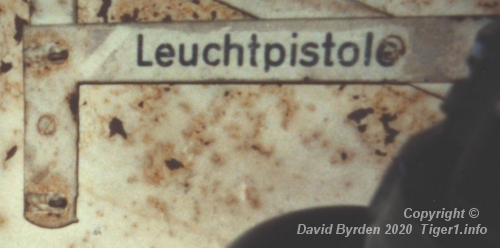
The pistol was stored in its holster in the tank. The holster was standardised with two D-rings on its reverse side for attachment to uniforms etc. Various designs of holders for it were invented for different Panzers. The Tiger's designers created this simple bracket, which is turned sideways in the photo. The top of the bracket is at the left here; it has two small hooks for the D-rings of the holster. At the other end, not visible in this photo, there is a belt that can be wrapped around the narrow end of the holster.
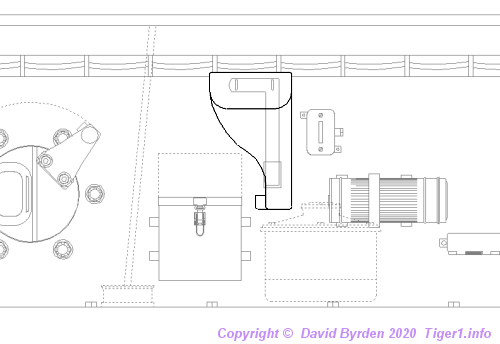
In the original design of the Tiger, this L-shaped bracket was welded to the left-hand turret wall, just ahead of the commander's position. This diagram shows the precise position of the bracket and how the holster sat upon it. The drawing is not complete, but we can see all of the items surrounding the holster, and that it is crowded.
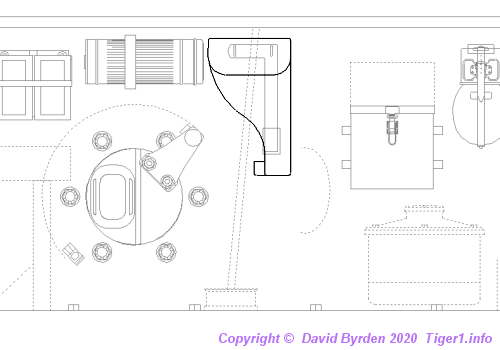
At about the 20th Tiger, an electric cable was removed from the upper turret wall and a handwheel was added to the gearbox by the commander. It's not clear if these changes occurred together, but undoubtedly it was the latter change that prompted a rearrangement of the equipment on the left-hand wall. The holster was moved higher up and put behind the shaft of the azimuth indicator.
Notice that the holster is so close to the turret roof that it cannot be opened in situ. The commander would open the belt and take the holster off the wall in order to use flares.
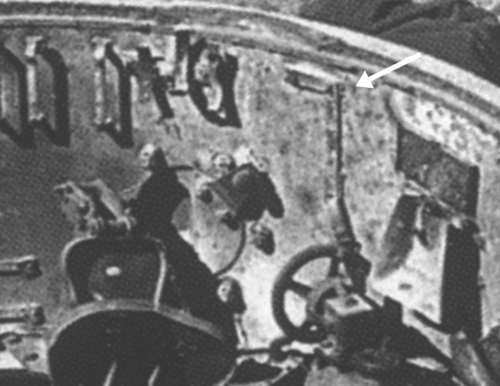
This is the wreckage of Tiger "833" in Tunisia. Many items have been blown off the wall or taken away, but the L-shaped bracket (arrowed) is still in place, and its belt is still attached. The surviving Tiger "712" had this layout before its left-hand wall was cut off.
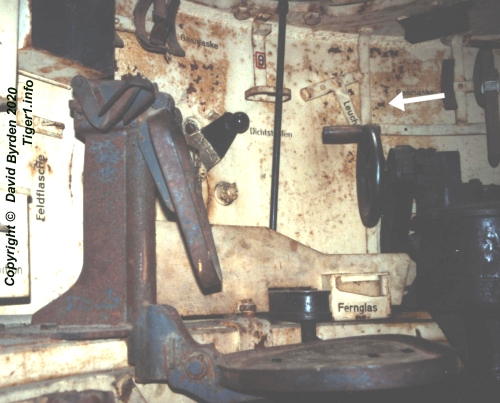
Turret storage was changed again around the 56th Tiger, with all of the items taken off the walls and put on scaffolds. At the same time, they were moved to more convenient places. The flare pistol was moved forward and tilted at an angle. This photo shows where the bracket (arrowed) was put, in relation to the commander's seat [2] .
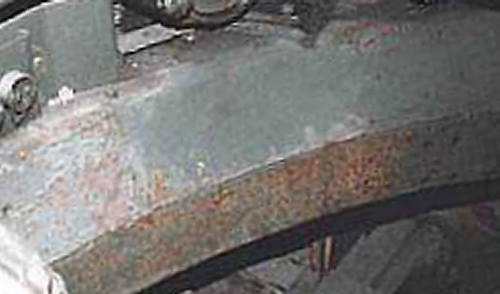
In the summer of 1943, a "New" turret was introduced, which we now call "Mid". This turret eliminated the submersion seal on the turret ring, and a sheet-metal cowling of typical German design was put on the ring. This is a (repainted) museum example and you can see that the upper portion of the cowling is slanted.
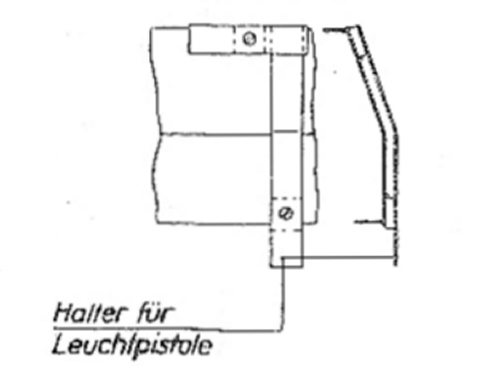
A turret manual was written at this time, and it shows the complete equipment layout for the new turret. This is an extract from it [1, see plate 58a] . The L-shaped bracket is now bolted to two metal squares that are welded on the cowling itself. The bracket is bent to conform to the cowling.
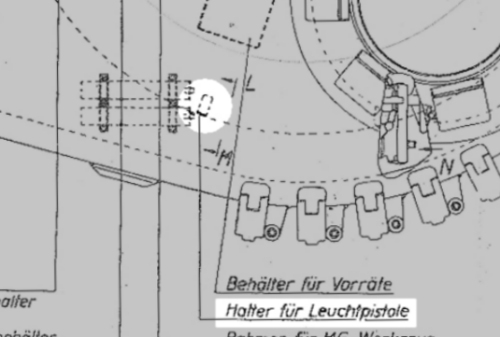
According to the manual [1, see plate 58] , the bracket was put on the left of the turret ring, by the loader. No trace of this has been found in any museum Tiger.
The turret storage was drastically simplified in late 1943. I don't yet know what was done about the flare pistol at that time.
[2] Survey of Tiger 250122, at Bovington museum, by David Byrden